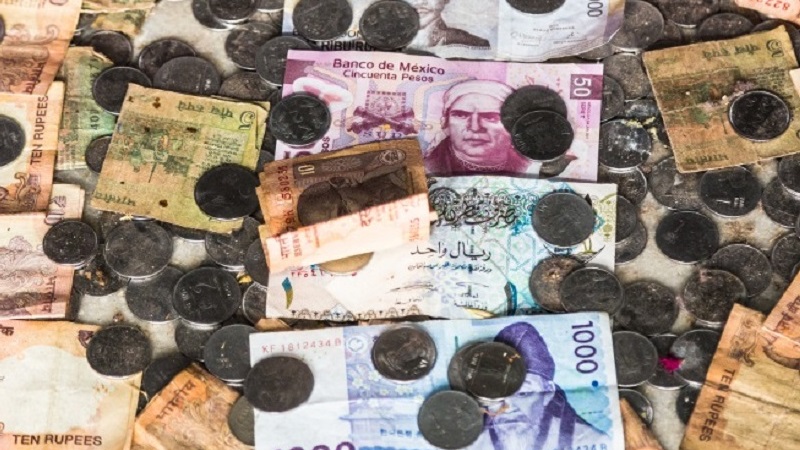DFMs are humming and hawing over their emerging market bond exposure as they weigh the allure of attractive currency valuations against the unknowns of the coronavirus.
Investors snapped up $118bn worth of new issuance from emerging market governments and companies in January, data from Dealogic cited in the Financial Times shows, despite the emergence of the coronavirus. This was up from $70bn in the same period last year and an all-time high for the month.
“We have been surprised by the ease at which the markets have shrugged off concerns around the coronavirus,” says Psigma head of investment strategy Rory McPherson. “To us, this seems overly complacent.”
Chase de Vere research manager Justine Fearns says debt issuance has remained relatively high as emerging market countries and corporates spy an opportunity to refinance on low yields and make use of currency swings.
The record borrowing was mostly in euros and dollars, the FT reported. The dollar had remained relatively soft throughout January, trading around £0.76 against the pound, but this week surged against other major currencies as the coronavirus death toll surpassed 1100 and investors sought out safe haven assets.
“It is possible that the spread of the coronavirus is at an early stage so it may be that emerging markets are looking to capitalise on what has been a relatively benign period in markets, despite the announcement of the virus and a flare up in tensions between the US and Iran, in anticipation of a potentially greater impact,” Fearns says.
Coronavirus impact could be huge
Willis Owen head of personal investing Adrian Lowcock says plummeting yields across bond markets and rate cutting from the Federal Reserve and ECB have kept demand for emerging market bonds high.
“With so much debt yielding zero or negative rates this forces investors to take on more risks and look overseas to markets such as EM debt,” says Lowcock.
UK-domiciled EM debt funds brought in net inflows of £36bn in 2019, data from Morningstar shows. EM debt was the third most popular fixed income asset class last year, taking in €41bn of aggregate net flows across UK and European funds, which was ahead of govvies and high yield (€23bn and €21bn respectively) but behind corporates (€42bn) and unconstrained bonds (€61bn).
China is very different now
Lowcock thinks the potential for the coronavirus to have a negative impact on emerging market debt is “huge” but adds “equally the outcome is unknown”.
“If the virus does breakout further then we could see sharp sell-offs and given the markets tend to over-react there is likely to be opportunity for fleet of foot investors.”
Comparisons to Sars and previous epidemics are useful but limited, McPherson says.
“China is very different to what it was back in 2002/3. It is eight times the size now, the second biggest economy globally and the biggest contributor to global growth.
“Also, it is very much service led as opposed to manufacturing; hence it is less responsive to changes in macro-policy,” he adds.
Local currency valuations tempting
Despite the dangers of the unknown some managers have been content to hold their ground.
“Whilst we continue to monitor the impact of coronavirus closely, at this stage I don’t think there will be a sustained material impact on the asset-class, and I’m happy to continue holding my exposure,” says Tilney head of multi-asset funds Ben Seager-Scott.
Prashant Chandran, who co-manages the Legg Mason Western Asset Macro Opportunities fund, has around two fifths of his fund in emerging market debt.
Speaking at a roundtable event in Legg Mason’s London offices on 30 January 2020 Chandran predicted riskier assets would continue to do well over H1 2020 as central banks continue to cut rates and inflation stays flat. He only expects to see volatility seeping into the markets toward the end of Q3, around the time of the 2020 US election.
Fearns expects local currency bond funds in particular to continue to attract investor flows. But she adds that she would expect managers to invest selectively due to weaker corporate earnings as default rates are expected to rise over the next two years.
Tilney gains exposure to the region through the Ashmore Emerging Market Local Currency Bond fund.
Chandran has a fair amount of local currency exposure, with 9% of the fund’s assets denominated in the Russian ruble and the Brazilian real and 6% in the Mexican peso.
Indirect EM debt exposure
Psigma has not added to its EM debt position, which is around 7% of its Balanced fund. Instead it has been taking risk off the table by selling down some of its US growth stocks which delivered strong performance in 2019.
“Whilst the valuation case for Emerging Debt is strong, notably on the local currency side, we are not adding at the moment,” says McPherson. “These assets tend to do best when the dollar is weakening and emerging market sentiment is high: not a dynamic we are seeing at the moment.”
McPherson invests in the Neuberger Short Duration Emerging Market Debt fund, which is 100% hard currency, as well as the Ashmore Emerging Market Total Return fund, which provides a blend of hard and local currency exposure.
Chase de Vere does not own emerging market debt funds directly, Fearns says, preferring to gain exposure to the region through flexible mandates like Ariel Bezalel’s Jupiter Strategic Bond fund.
Bezalel’s £4.4bn fund currently holds 18% in Asia ex Japan, 6% in European Emerging Markets, 3% in Latin America and minimal amounts in Africa and the Middle East, according to Trustnet.










